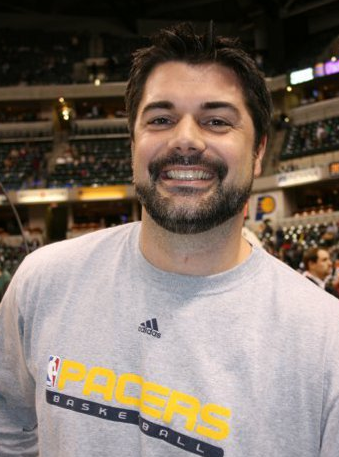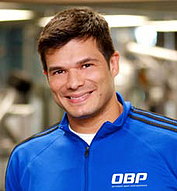Click HERE to read this article by Alan Stein.
Posted by Boston Sports Medicine and Performance Group on Oct 9, 2011 7:15:00 AM
Click HERE to read this article by Alan Stein.
Topics: Basketball Related, Alan Stein
Posted by Boston Sports Medicine and Performance Group on Sep 24, 2011 9:44:00 AM
Click HERE to view this article.
Topics: Basketball Related, Guest Author
Posted by Boston Sports Medicine and Performance Group on Sep 14, 2011 5:39:00 PM
Click HERE to listen to Strength Coach Podcast #87 featuring Basketball Advisory Board member Art Horne as he describes what's new with the Northeastern University Basketball team and his new book, Barefoot in Boston.
Topics: Basketball Related, Art Horne
Posted by Boston Sports Medicine and Performance Group on Sep 3, 2011 7:04:00 AM
Topics: Basketball Related, Brian McCormick
Posted by Boston Sports Medicine and Performance Group on Sep 3, 2011 6:52:00 AM
In this interview, Art discusses his new book, "Barefoot in Boston: A Practical Guide to Achieving Injury Resolution and Enhancing Performance", as well as discussing some research on barefoot walking and training versus wearing shoes, what to look for in minimalist shoes, how he has incorporated barefoot training with his basketball team, and much more..(including how to take a hack saw to a basketball shoe!)
** This interview is under the members section and can only be viewed with a membership to this site but with fresh information being posted weekly along with interviews from Gray Cook, Dr. Stu McGill and others, membership clearly has it's privileges!
Topics: Basketball Related, Art Horne
Posted by Boston Sports Medicine and Performance Group on Aug 26, 2011 6:22:00 PM
Check out what Indiana Pacer's Strength & Conditioning Coach has to say about life in the NBA.
Click HERE to read this article.

Topics: Basketball Related, Guest Author
Posted by Boston Sports Medicine and Performance Group on Aug 26, 2011 6:17:00 PM
by Art Horne
Over the past several years I have made the integration of Sports Medicine care and Strength Training a core principle within our department. This is relatively a new concept as strength coaches and sports medicine professionals have often been pitted against each other by sport coaches, athletes and often themselves. Although this new path to better health and performance is clearly thwart with challenges, there are some simple steps that both departments can make that immediately impacts BOTH the health and performance of the student-athlete and leaves both professionals looking better in the eyes of all those around them. Below is a question from a colleague that I wanted to share publicly. In order to answer his question, as well as many others, it is my intention over the next few months to describe and share with you the many small steps that any college or university can implement in order to provide an improved care and performance model.
Question:
I would like to start out by saying that I really enjoy watching the videos and articles that you have released in reference to the approach you use at Northeastern University to bridge the gap between strength and conditioning and sports medicine. I am a strength and conditioning coach for a small Div. I college and also have a background in athletic training. I wanted to see if you could provide more insight as to how you take the results from the screening and testing that you do and then implement them into your programming. We screen our athletes, which consist of the FMS and a couple more orthopedic screens that we feel are applicable to the particular sport (Modified Thomas Test, Bridge w/ Leg Extension, Reach/Roll/Lift, etc….). How would you then use the results in the development of your program? Do you give each athlete individual work or do you use a systematic team approach addressing common faults or dysfunctions? I am torn as to what to do because as I am sure you are familiar with, time I have to spend with athletes is limited and getting them to comply with performing certain exercises on their own time can be very difficult at times. Any advice or examples that you could provide would be very beneficial. Thanks in advance for your time.
The Language Barrier:

The first step in any “relationship” is being able to understand what the other person is saying, and there is no greater communication gap in existence than the one that currently exists between Sport Medicine and Strength Training professionals. In order to discuss dysfunctional movement patterns, corrective exercises, rehabilitation goals or substitutions/alternatives for strength exercises both parties must share a common language and then demand continuity with these terms.
I remember many years ago speaking to one of our staff members about a particular athlete and suggesting that she speak to the strength staff about an alternative exercise for an athlete who was suffering from some low back pain. When asked what I recommended I immediately suggested a more spine sparing approach to her current “core strengthening” exercises and that we recommend McGill’s “Birddog” exercise which has been proven to be safer on the spine than the flexion based crunches the athlete was accustomed to in the weight room. Not knowing what a “Birddog” exercise was, I quickly demonstrated the exercise to my co-worker at which time she smiled and said that she was familiar with the exercise but learned it as a kneeling opposite arm-leg reach. Confused, (since McGill made the exercise famous as part of his “Big Three”) I asked another staff member what the exercise was that I was performing to which he replied, “a quadruped contralateral reach.” Now slightly irritated (but happy that the name at least described the movement), I bolted over to the strength room to inquire about their knowledge of Stuart McGill, his research and what they called this particular exercise. To my surprise McGill’s work had never been heard of and that this particular exercise was programmed as a “Flying Superman” within the student-athletes performance training. It became painfully clear that the first order of business was getting both staffs to speak the same language, both within each department and across them.
Because most of the members on your staff (both Sports Medicine and Strength) have come from a variety of educational backgrounds, continuing education courses and levels of expertise, it is important to begin formulating a shared exercise and assessment language in order for civil conversations to first take place. By investing only a small amount of time and addressing this often overlooked, yet integral first step your staff will begin to enjoy the following benefits:
1. Provide improved services to your student-athletes. Imagine the previous example taking place and a student-athlete approaching you for help with their kneeling opposite arm-leg reaches. Now, the name basically tells you exactly what is needed, but imagine you knowing the exercise as a different name and perhaps emphasizing a different teaching point altogether. Would you teach the athlete how to do the exercise “your” way? Find the athletic trainer who wrote the rehabilitation program to help them out? Or tell them that you’re sorry but you don’t know what they should be doing? In any case precious time is wasted and as a fellow athletic trainer, this is something none of us has enough of. In addition, you can imagine the frustration of the student-athlete witnessing your staff stumble through the most basic exercise descriptions!
2. A shared language allows staff members to be interchangeable because now each staff member is calling the same exercise the same name and teaching it while emphasising the same teaching points. This allows athletic trainers to jump in and help with all rehabilitation programs, and not just “their own teams” as well as provide continued care during an athletic trainer’s absence (sick day, vacation or travel with another team).
3. Continued care and coaching along the performance continuum. Here’s where the magic happens: whether the athlete your provide care for is one week into their ACL rehabilitation or the starting point guard for the basketball team pushing 300 pounds in the squat rack, the exercises if named the same, taught the same and progressed the same all fall along the same care-performance continuum. Let’s examine the above example to really understand the power of the shared language. Imagine on the far left hand side the student-athlete one week post-op ACL reconstruction and on the far right side the starting point guard pushing serious weight and performing at the highest level. Moving along the continuum from left to right the athlete will experience and undergo exercises such as: Quad Sets, Straight leg Raises, Clams, Glute-Bridges, Mini-Band walks, Wall Squats, Body weight squats, Lunges, Box Jumps, and the list goes on. At some time this athlete will be in the weight room and not be able to perform the Olympic lift for example programmed for the team that day but can certainly do pull-ups, side bridges and a number of other exercises that the strength coach has put in place during any particular phase or block of training. If a shared language exists, the athletic trainer and the strength coach can have a civil and meaningful conversation about where the athlete is and discuss and implement substitutions for exercises that are not appropriate for them all while progressing the athlete safely along this care-performance line. Not to mention, many of the rehabilitation exercises can be implemented safely within strength training program as substitutions for advanced exercises thus minimizing the athlete’s daily rehabilitation time and allowing the athletic trainer who is providing care for this athlete more time to focus on other athletes or say for example address soft tissue restrictions with the same athlete during “rehab” time which often requires a one-on-one time period, thus making their strength training time much more effective.
Now, some people may say that a couple of exercise names or switching names from time to time is really not a big deal. Perhaps not. If you only care for one team, perform all the rehabilitation by yourself and no other staff member helps you, then you can certainly come up with your own language. But imagine for a moment a car factory where all the parts are all called different names, put on in different orders and actually assembled with various degrees of precision. Would you ever buy a car from a factory like this? The answer is a resounding no - so how can we expect our student-athletes to buy in to what we are saying if each staff member is saying something different? By having an Exercise Pool to draw consistent language from, the number of benefits far outweigh any possible downside while also reducing the amount of confusion among your own staff and encouraging an atmosphere of shared help and patient responsibility.
Next week: How a shared language during initial assessment can limit overall injury rate and increase performance immediately.
Topics: Basketball Related, Art Horne
Posted by Boston Sports Medicine and Performance Group on Aug 17, 2011 7:00:00 PM

Desmond Santiago
Puerto Rico
Desmond Santiago began his career as a trainer in 1997 in one of the best gyms of that time: The Caparra Fitness Club. Later in 1999, Desmond ventured to Power House Gym where he worked independently and quickly became one of the most sought out trainers in the gym. In the year 2001 he founded Optimum Body Performance. The aim was to create a team of professional trainers all certified and well prepared to provide top-notch service to clients, designing and providing exercise and fitness programs, geared toward the goal of the clients.
Desmond‘s passion and continual pursuit for quality, brought him to establish his own training facility in the year 2005. There he created and implemented innovative and successful performance enhancement training programs for his athletes and members. Desmond soon developed a reputation and established himself as the best in Puerto Rico, allowing Optimum Body Performance to open its second facility in the year 2008 at the Natatorium in Central Park, Puerto Rico.
Desmond is a National Academy of Sports Medicine (NASM) Performance Enhancement Specialist (PES) and a National Strength and Conditioning Assoc. (NSCA) certified Personal trainer (CPT). Trained and mentored by some of the best performance enhancement Coaches in the US.
Desmond Santiago currently serves as the strength and conditioning coach for the Puerto Rico National Basketball Team, as a writer for ESPN Deportes “La revista”, as a speaker and educator in the fitness and performance enhancement industry, as a performance enhancement coach to athletes of all levels , but above all as the president of Optimum Body Performance, where he ensures OBP lives up to his Vision and Mission.
Topics: Basketball Related, Desmond Santiago
Posted by Boston Sports Medicine and Performance Group on Aug 14, 2011 8:34:00 PM
Click HERE to read Charlie's Article.
Topics: Basketball Related, Charlie Weingroff
Posted by Boston Sports Medicine and Performance Group on Aug 11, 2011 9:45:00 PM
Click HERE to view Brian McCormick's article.
Topics: Basketball Related, Brian McCormick
© 2020 Boston Sports Medicine and Performance Group, LLC